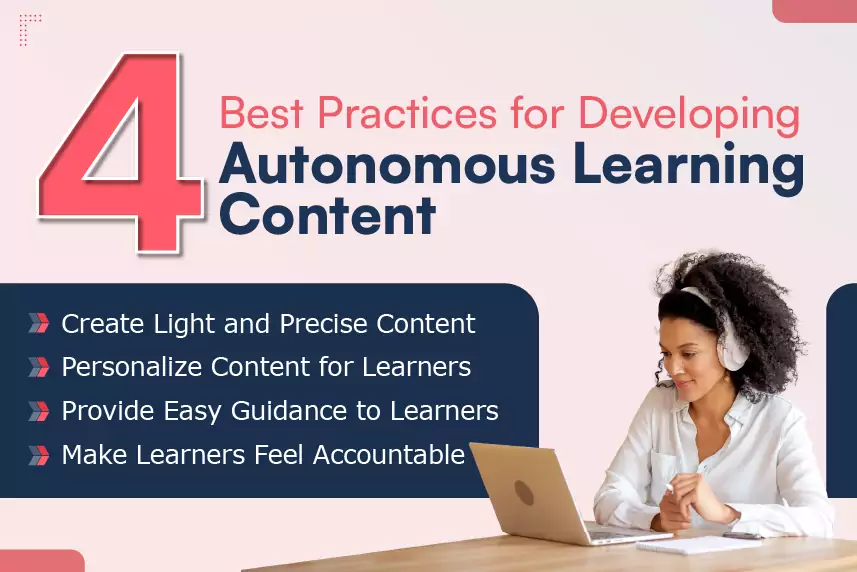
By definition, autonomy is your capacity to take responsibility for, and control of your own learning, whether in an institution, or completely independent of an instructor or institution. Does this sound familiar? Can you relate to it? Let’s explore further in this article.
There are drastic changes in our everyday life when it comes to learning, compared to a decade back. Autonomy is a big part of this new age learning and is completely transforming our learning experiences. Kids are learning with apps like Byju’s and professionals are making use of portals like Udemy. Watching tutorials to create curated photos for Instagram and vines for YouTube!
Autonomy in workplace learning has been fueled by certain factors in the recent years. Some of them being:
• Inclusion of millennials and gen Z in the workforce
•High mobile usage penetration
• Rise of the gig economy
Users who opt for an autonomous style of learning are usually the ones who want to learn a particular skill in a very short time frame. These users are expected to grasp concepts quickly and put them into practice immediately.
At the core of it, autonomy demands the focus to shift from a culture of training to a culture of learning. Building right learning content is the first step towards encouraging it. Here are some good practices to remember as you develop autonomous learning content for your organization.
1. Personalize the course
i. Using terms like “I am here” or ‘’you are here’’ for the user’s status.
ii. Allow users to input their name, which the system dynamically fetches through the course.
2. Make users feel accountable
i. Showing awards or rewards that they have earned.
ii. Having negative scoring also helps sometimes.
iii. Having timers to create a sense of urgency.
3. Guide users without overwhelming them
i. Showing roadmaps or scoreboards for the status – this is very important for self-paced learning.
ii. Using accurate signifiers to guide the user – these ensure that no time is wasted in completing user actions or interactions.
iii. Providing options to revisit or skip.
4. Keeping content light and precise
i. Using smaller animations with greater impact, since the attention span of the modern-day learners is quite low.
ii. Animation screens should always be ‘open-navigation’ and not restricted. Users should be able to decide which part of the animation they want to visit.
iii. Do not use jargonized statements and objectives. Keep the language simple. And also, try and limit the total number of objectives to 4, to keep them achievable.
Autonomy is more of a mindset than a practice. What do you think? Are there any best practices that you would like to share? Comment below!





